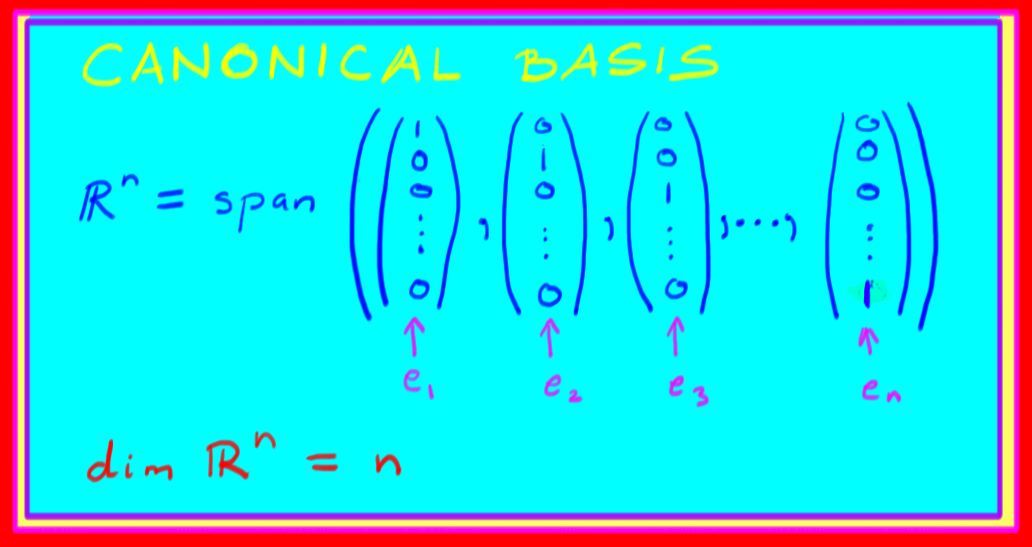11.1: Bases in Rⁿ
( \newcommand{\kernel}{\mathrm{null}\,}\)
In review question 2, chapter 10 you checked that
ℜn=span{(10⋮0),(01⋮0),…,(00⋮1)},
and that this set of vectors is linearly independent. (If you didn't do that problem, check this before reading any further!) So this set of vectors is a basis for ℜn, and dimℜn=n. This basis is often called the standard or canonical basis for ℜn. The vector with a one in the ith position and zeros everywhere else is written ei. (You could also view it as the function {1,2,…,n}→R where ei(j)=1 if i=j and 0 if i≠j.) It points in the direction of the ith coordinate axis, and has unit length. In multivariable calculus classes, this basis is often written {i,j,k} for ℜ3.

Note that it is often convenient to order basis elements, so rather than writing a set of vectors, we would write a list. This is called an ordered basis. For example, the canonical ordered basis for Rn is (e1,e2,…,en). The possibility to reorder basis vectors is not the only way in which bases are non-unique:
Remark (Bases are not unique)
While there exists a unique way to express a vector in terms of any particular basis, bases themselves are far from unique.
For example, both of the sets:
{(10),(01)} and {(11),(1−1)}
are bases for ℜ2. Rescaling any vector in one of these sets is already enough to show that ℜ2 has infinitely many bases. But even if we require that all of the basis vectors have unit length, it turns out that there are still infinitely many bases for ℜ2 (see review question 3).
To see whether a collection of vectors S={v1,…,vm} is a basis for ℜn, we have to check that they are linearly independent and that they span ℜn. From the previous discussion, we also know that m must equal n, so lets assume S has n vectors. If S is linearly independent, then there is no non-trivial solution of the equation
0=x1v1+⋯+xnvn.
Let M be a matrix whose columns are the vectors vi and X the column vector with entries xi. Then the above equation is equivalent to requiring that there is a unique solution to
MX=0.
To see if S spans ℜn, we take an arbitrary vector w and solve the linear system
w=x1v1+⋯+xnvn
in the unknowns xi. For this, we need to find a unique solution for the linear system MX=w.
Thus, we need to show that M−1 exists, so that
X=M−1w
is the unique solution we desire. Then we see that S is a basis for V if and only if detM≠0.
Theorem
Let S={v1,…,vm} be a collection of vectors in ℜn. Let M be the matrix whose columns are the vectors in S. Then S is a basis for V if and only if m is the dimension of V and
detM≠0.
Remark
Also observe that S is a basis if and only if RREF(M)=I.
Example 11.1.1:
Let
S={(10),(01)} and T={(11),(1−1)}.
Then set MS=(1001). Since detMS=1≠0, then S is a basis for ℜ2.\\
Likewise, set MT=(111−1). Since detMT=−2≠0, then T is a basis for ℜ2.
Contributor
David Cherney, Tom Denton, and Andrew Waldron (UC Davis)


